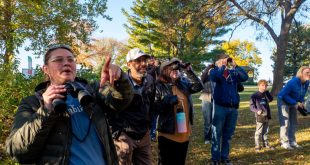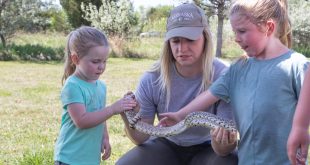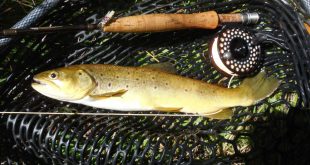Always something neat happening in the world of wildlife research. Hunters oftentimes play an important role in the process, too. Pheasant hunters have the chance to take part in some current University of Nebraska – Lincoln research going on this bird season. hershy
How we hunt:
A study of pheasant and hunter movements in Southwest Nebraska
On a clear, chilly morning this past October, the distant cackle of pheasants greeted hunters arriving at CRP fields, signaling the return of upland bird season in Nebraska. They may also have seen Lyndsie Wszola, a master’s student in the Nebraska Cooperative Fish and Wildlife Research Unit at the University of Nebraska who is studying how pheasant hunters and pheasants interact in the fields they share. 
“One of the premises of this research is that people are predators,” Lyndsie explains. And just like any other predator, hunters don’t necessarily walk in perfectly straight lines through vegetation. While some fields may be open and easy to walk through, others have denser, taller grass and forbs, which can make traversing them more difficult. What that means is that even though every hunter moves through a field slightly differently, hunters tend to walk through parts of some fields more than other parts.
To figure out how hunters use a field, Lyndsie first measures the vegetation on several public-access CRP fields in her SW Nebraska study site, where Coop Unit researchers have been radio-tagging and tracking pheasants since 2012. She then recruits volunteer pheasant hunters to wear a GPS-enabled wristwatch during their hunt, which tracks the route hunters take through a field. Ultimately, she’ll have data that shows how both hunters and pheasants are using the same places.
 Why does it matter? Lyndsie is curious to learn whether pheasants respond differently depending on how many hunters are using fields and where people are walking. And a bird’s response to hunters may even be different depending on the vegetation within the field.
Why does it matter? Lyndsie is curious to learn whether pheasants respond differently depending on how many hunters are using fields and where people are walking. And a bird’s response to hunters may even be different depending on the vegetation within the field.
“To us, it may not seem very different if five hunters walk through one hectare of this field versus another hectare in this field,” but she explains that things may look very different from a pheasant’s perspective. For example, in places where the vegetation is denser, there’s more cover for pheasants to hide as hunters walk by. That may make pheasants less likely to move to a new place, a behavior that pheasants use try to avoid predators, including people.
Last fall, Lyndsie collected data from more than 70 pheasant hunts and this fall she hopes to collect even more. She’ll use the information she collects to help figure out where hunters typically walk, and whether hunter movements influence how the birds are using the same fields. From a management perspective, she hopes that her research will provide insights that will help both hunters and pheasants alike. “We really need to consider the behavioral ecology implications of how we manage these fields and what really draws people,” she says.
For more information, watch Lyndsie working with hunters in our Track Your Hunt Video or to learn how to volunteer to carry a GPS unit during your hunt, visit: TrackYourHunt.unl.edu
 Nebraskaland Magazine
Nebraskaland Magazine



